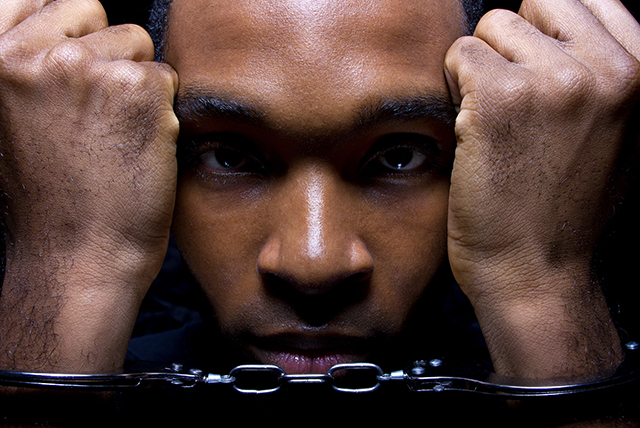
As Women’s History Month begins, activists are renewing their call to “make violence against women history.” To many, the phrase “violence against women” connotes person-on-person violence – things like spousal abuse or sexual violence on college campuses. But here in the United States, the state is also very much involved in perpetuating violence against women. Each day, millions of women experience violence that is directly attributable to the epidemic of mass imprisonment.
Mass imprisonment in and of itself is a form of state-sanctioned violence against women. And one does not need to be imprisoned herself to experience this violence.
Mass imprisonment tears apart families and communities by targeting mostly young Black and Brown men, most of whom have committed nonviolent offenses. The women and children in these men’s lives feel their absence acutely. This weekend – like every weekend – visiting rooms in prisons and jails across the country will be filled with women and their children – many of whom have scrimped and saved and traveled hours to dreary prison towns to affirm to the men in their lives that they are not forgotten. To get there, these women will have had to endure often unspeakable indignities – from the humiliating, aggressive pat-down searches to the anxiety of never knowing really in what condition they will find their men.
Loving someone who lives behind bars comes with a very high price – literally and figuratively.
A study examining the physical health of women with imprisoned partners concluded that these women have extraordinarily high rates of illness (like asthma, hypertension, anxiety and depression). The presence of these ailments is so highly correlated with the trauma of having a loved one imprisoned that researchers recommend that health-care providers screen for romantic involvement with a criminal justice-involved partner much as they have started to screen for domestic violence for all women.
Then there are the exorbitant financial burdens imposed on women who want to stay connected to loved ones behind bars. Private companies make millions in profits by charging the families of people who are imprisoned for everything from phone calls to video visitation to processing money orders so that people inside can buy underwear and other necessities. The women left behind must either pay up or lose the ability to connect with their partners while they’re behind bars.
Yet, we are all indebted to women who stand by their imprisoned partners. This is so because men who have solid ties to their home communities and strong support networks with which they have maintained communication during their imprisonment are far less likely to reoffend than the men who do their time alone.
The harsh, brutal conditions endemic to many of our nation’s prisons and jails increase recidivism rates, thereby contributing directly to increased rates of violence for the women who live in the communities most affected by imprisonment. Mass imprisonment doesn’t just destabilize the family bond and cause immeasurable amounts of stress and anxiety in the lives of the women left behind. It also creates the conditions that breed crime and too often violence in our communities – men who find themselves unemployable after doing a bid, who live with post-traumatic stress as a result of the brutal prison conditions they endured, parole agents who live to play a game of gotcha – sending people back to prison for the slightest perceived misstep.
The persistence of violence against women in this country is intimately bound up in the epidemic of mass imprisonment. And violence against women won’t become history until mass incarceration is.
Angry, shocked, overwhelmed? Take action: Support independent media.
We’ve borne witness to a chaotic first few months in Trump’s presidency.
Over the last months, each executive order has delivered shock and bewilderment — a core part of a strategy to make the right-wing turn feel inevitable and overwhelming. But, as organizer Sandra Avalos implored us to remember in Truthout last November, “Together, we are more powerful than Trump.”
Indeed, the Trump administration is pushing through executive orders, but — as we’ve reported at Truthout — many are in legal limbo and face court challenges from unions and civil rights groups. Efforts to quash anti-racist teaching and DEI programs are stalled by education faculty, staff, and students refusing to comply. And communities across the country are coming together to raise the alarm on ICE raids, inform neighbors of their civil rights, and protect each other in moving shows of solidarity.
It will be a long fight ahead. And as nonprofit movement media, Truthout plans to be there documenting and uplifting resistance.
As we undertake this life-sustaining work, we appeal for your support. Please, if you find value in what we do, join our community of sustainers by making a monthly or one-time gift.